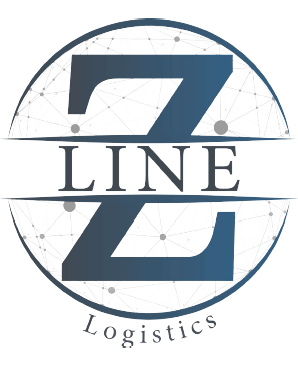In today’s interconnected world, businesses are no longer limited to sourcing materials and services from within their own borders.
Global sourcing offers a vast array of opportunities to reduce costs, improve quality, and access a wider range of resources.
However, navigating the complexities of global supply chains requires careful planning and strategic decision-making.
What Is Global Sourcing in Supply Chain Management?
Global sourcing is a strategic approach where businesses procure goods and services from suppliers located in different countries or regions.
This practice has become increasingly prevalent in today’s interconnected world, driven by the pursuit of cost savings, access to a wider range of products and services, and the potential for innovation.
It’s a powerful tool that enables businesses to tap into a vast network of resources, reduce costs, and enhance their competitive edge.
Read more: Do You Have to Pay Customs in Hong Kong? Hong Kong Import Tax in 2024
The Benefits of Global Sourcing in Supply Chain Management

Global sourcing offers numerous advantages for businesses seeking to optimize their supply chains and gain a competitive edge. Here are some of the key benefits:
1. Cost Reduction:
- Lower Labor Costs: Sourcing from regions with lower labor costs can significantly reduce production expenses.
- Economies of Scale: Working with larger-scale suppliers can lead to lower unit costs due to economies of scale.
2. Access to a Wider Range of Products and Services:
- Specialized Expertise: Global sourcing provides access to suppliers with specialized skills and expertise that may not be available domestically.
- Unique Offerings: Discover innovative products and services that can differentiate your business.
3. Improved Quality:
- Higher Standards: Sourcing from regions known for their high-quality manufacturing or services can enhance the quality of your products or offerings.
- Continuous Improvement: Working with global suppliers can foster a culture of continuous improvement and innovation.
4. Increased Innovation:
- Exposure to New Ideas: Collaborating with suppliers from different cultures and regions can spark creativity and innovation.
- Access to Emerging Technologies: Discover new technologies and trends that can enhance your business operations.
5. Enhanced Competitiveness:
- Cost Advantage: Reduced costs can make your products or services more competitive in the marketplace.
- Product Differentiation: Accessing unique products or services can help you stand out from competitors.
6. Risk Mitigation:
- Diversification: Sourcing from multiple suppliers can help mitigate risks associated with relying on a single source.
- Reduced Dependency: Reducing dependence on domestic suppliers can protect your business from disruptions.
Learn more: The Positive and Negative Impacts of the Amazon Effect on Freight in Dubai
Overcoming the Challenges of Global Sourcing in Supply Chain Management
While global sourcing offers numerous benefits, it’s not without its challenges. Here are some common obstacles to consider:
1. Legal and Regulatory Hurdles:
- Varying Laws: Different countries have distinct legal and regulatory frameworks. Understanding these differences is crucial for compliance.
- Due Diligence: Conduct thorough research to ensure your suppliers adhere to relevant laws and regulations.
2. Currency Fluctuations:
- Financial Impact: Exchange rate fluctuations can affect the cost of goods and services.
- Risk Mitigation: Implement strategies like forward contracts or hedging to manage currency risk.
3. Political and Economic Instability:
- Uncertainty: Political and economic changes can create instability in the sourcing environment.
- Monitoring and Adaptation: Stay informed about political and economic developments in your sourcing regions.
4. Language and Cultural Barriers:
- Effective Communication: Overcome language barriers through translation services or bilingual staff.
- Cultural Sensitivity: Respect cultural differences and adapt your approach accordingly.
5. Supply Chain Disruptions:
- Unexpected Events: Be prepared for disruptions like natural disasters, political unrest, or trade wars.
- Risk Management: Develop contingency plans to mitigate the impact of disruptions.
Read more: Embracing Green Last-mile Delivery in Dubai for 2024
Technology’s Role in Global Sourcing: A Digital Transformation

Technology has revolutionized supply chain management, enabling businesses to streamline processes, improve efficiency, and enhance decision-making.
In the context of global sourcing, technology plays a crucial role in:
- Supplier Relationship Management (SRM) Software: Centralize supplier information, track performance, and facilitate communication.
- Digital Onboarding: Streamline the process of onboarding new suppliers and managing contracts.
- Advanced Analytics: Utilize data analytics to predict demand, optimize inventory levels, and identify potential disruptions.
- AI-Powered Forecasting: Employ AI algorithms to improve the accuracy of demand forecasts.
- Transportation Management Systems (TMS): Optimize transportation routes, track shipments, and manage logistics costs.
- Real-Time Tracking: Use GPS and IoT technologies to monitor the movement of goods in real-time.
- Supply Chain Visibility: Gain visibility into your supply chain to identify potential risks and disruptions.
For more information: What are the 4 Pillars of Global Sourcing?
Conclusion: The Future of Global Sourcing
Global sourcing is no longer just a trend; it’s a strategic imperative for businesses seeking to thrive in today’s competitive landscape.
By understanding the benefits and challenges of global sourcing, and by implementing effective strategies with Z Line Logistics Company, businesses can unlock new opportunities, reduce costs, and improve their overall competitiveness.




